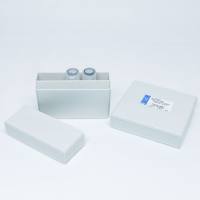Loose-Patch-Clamp Method
互联网
1248
One of the basic tenets of experimental science has been the search for techniques that give relevant information from intact
systems while causing minimal effects. This concept is particularly important in the physiological branch of the biological
sciences. In general, reductionist methods assume that the net behavior of a system is the result of the summation of individual
parameters, an assumption that is not always true in the biological sciences. On the other hand, in electrophysiology, reductionist
methods have been successful, especially using voltage and current patch-clamp techniques. These, however, have practical
limitations in that in general they require special processing of cells and tissues for their application. The effects of
special processing become more notable with the need for having “clean” surfaces for the formation of tight seal patches.
Although voltage- and current-clamp techniques with tight seals have given good information on the biophysical characteristics
of ionic currents (and channels), such information from intact or in situ systems is more difficult, because these are minimally
altered preparations. Information obtained with tight-patch techniques is also limited by the changes caused in the internal
environment of cells (whole-cell configuration) or isolation from external effects (i.e., isolation of the patch under the
cell-attached configuration).






